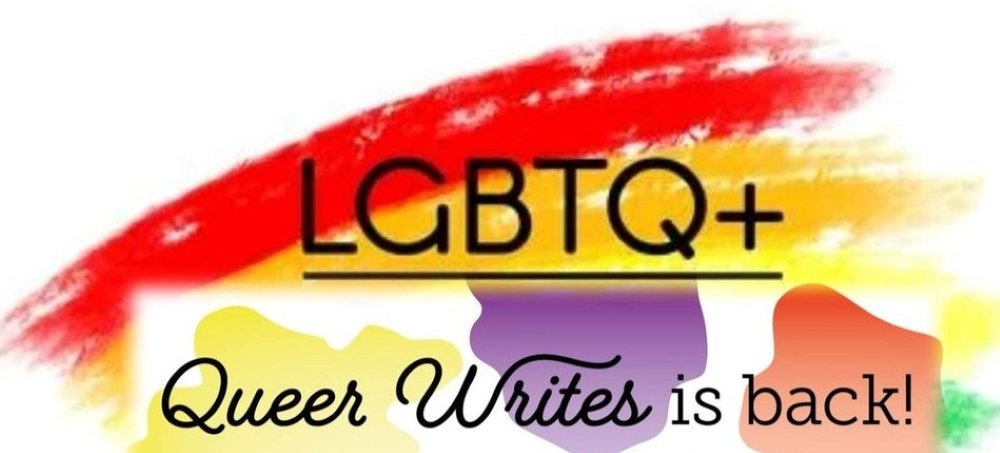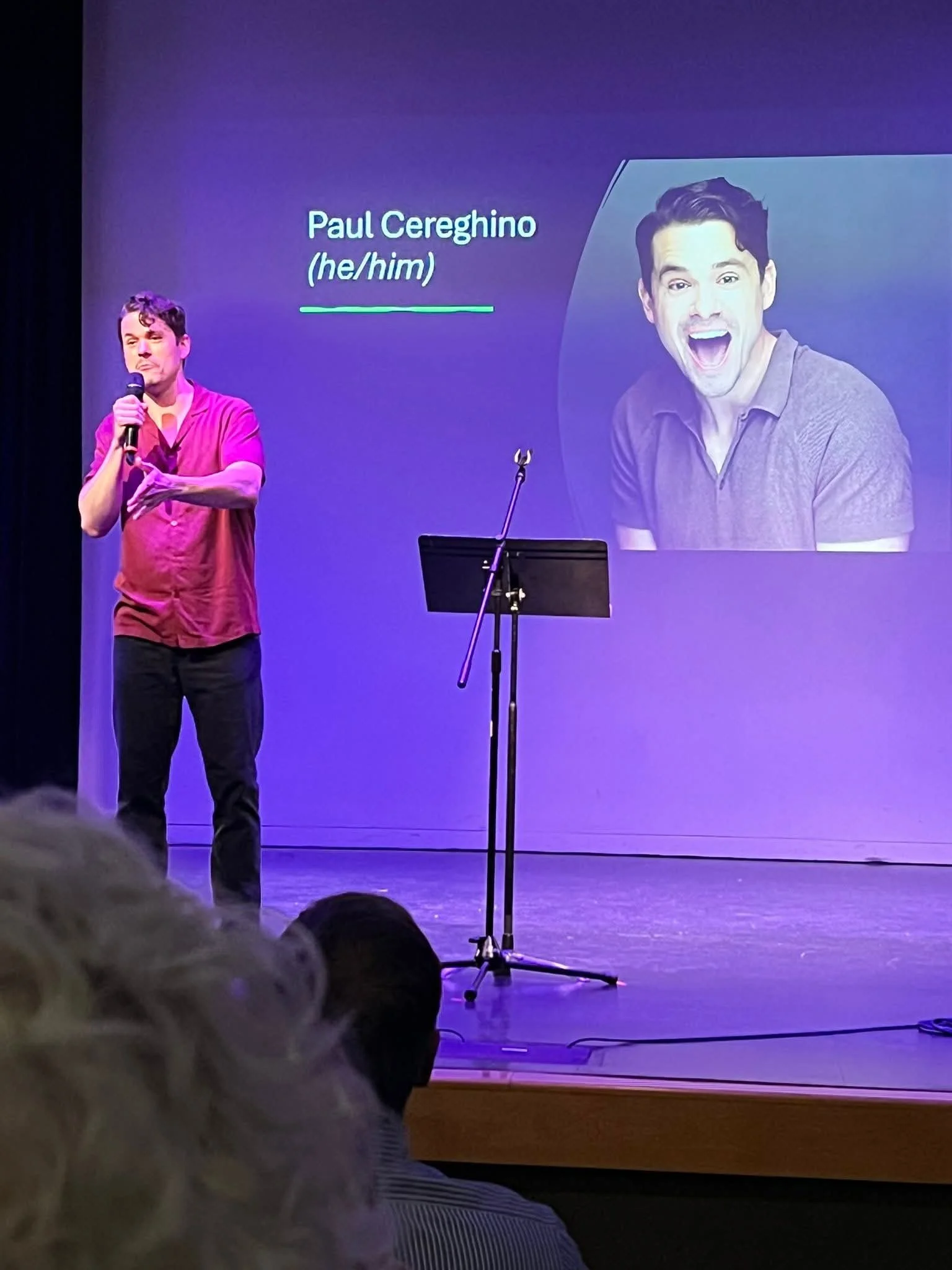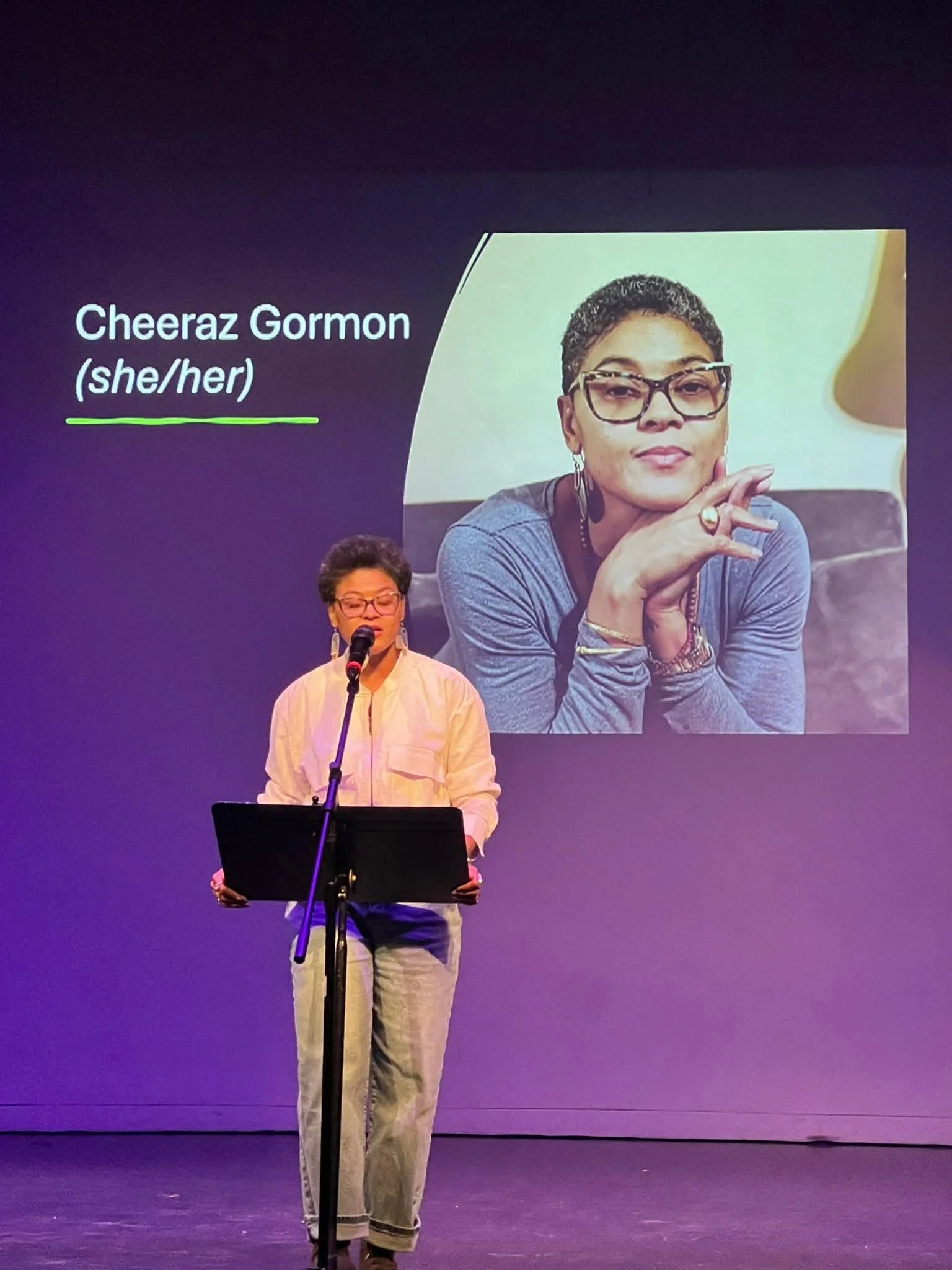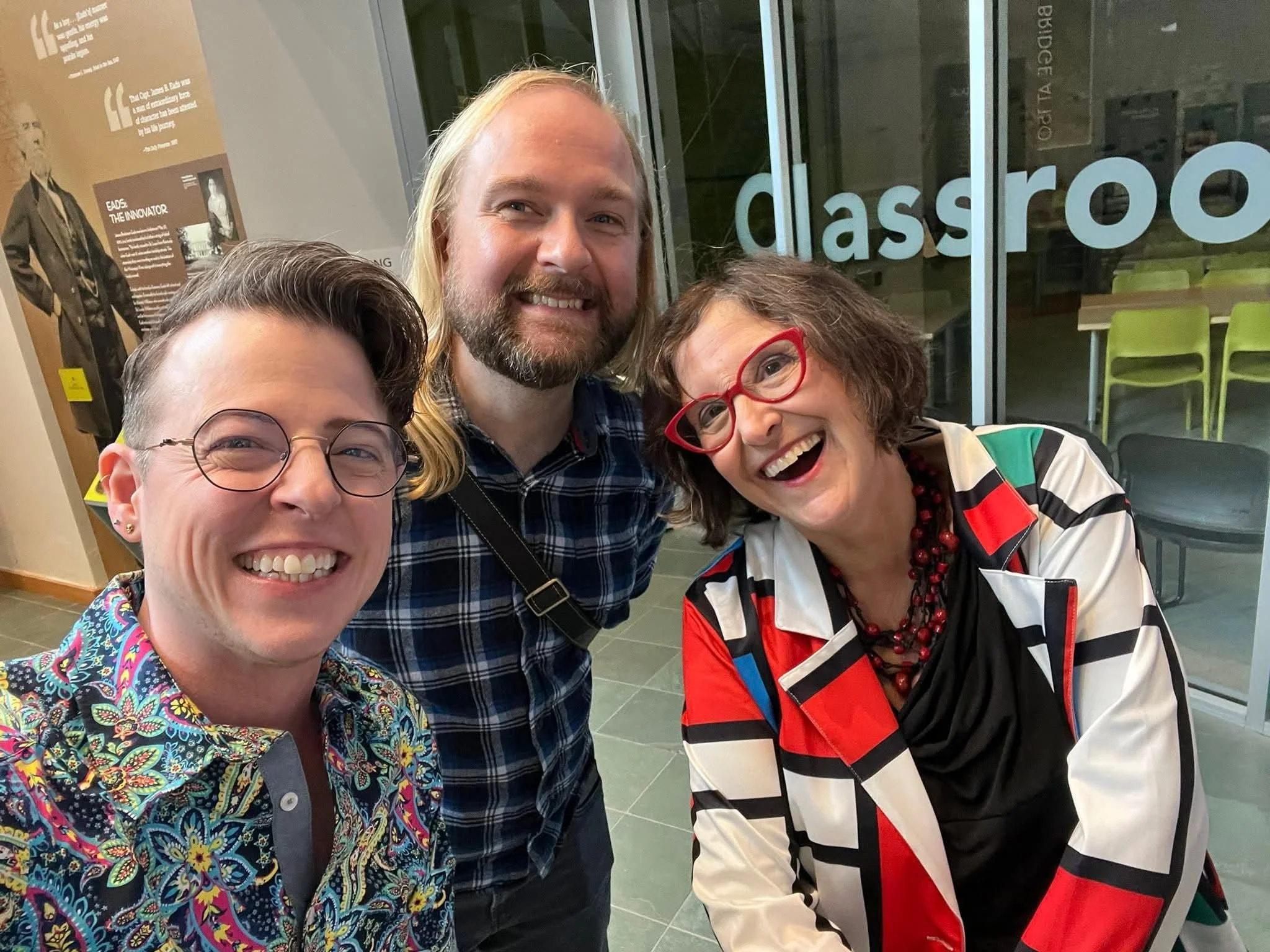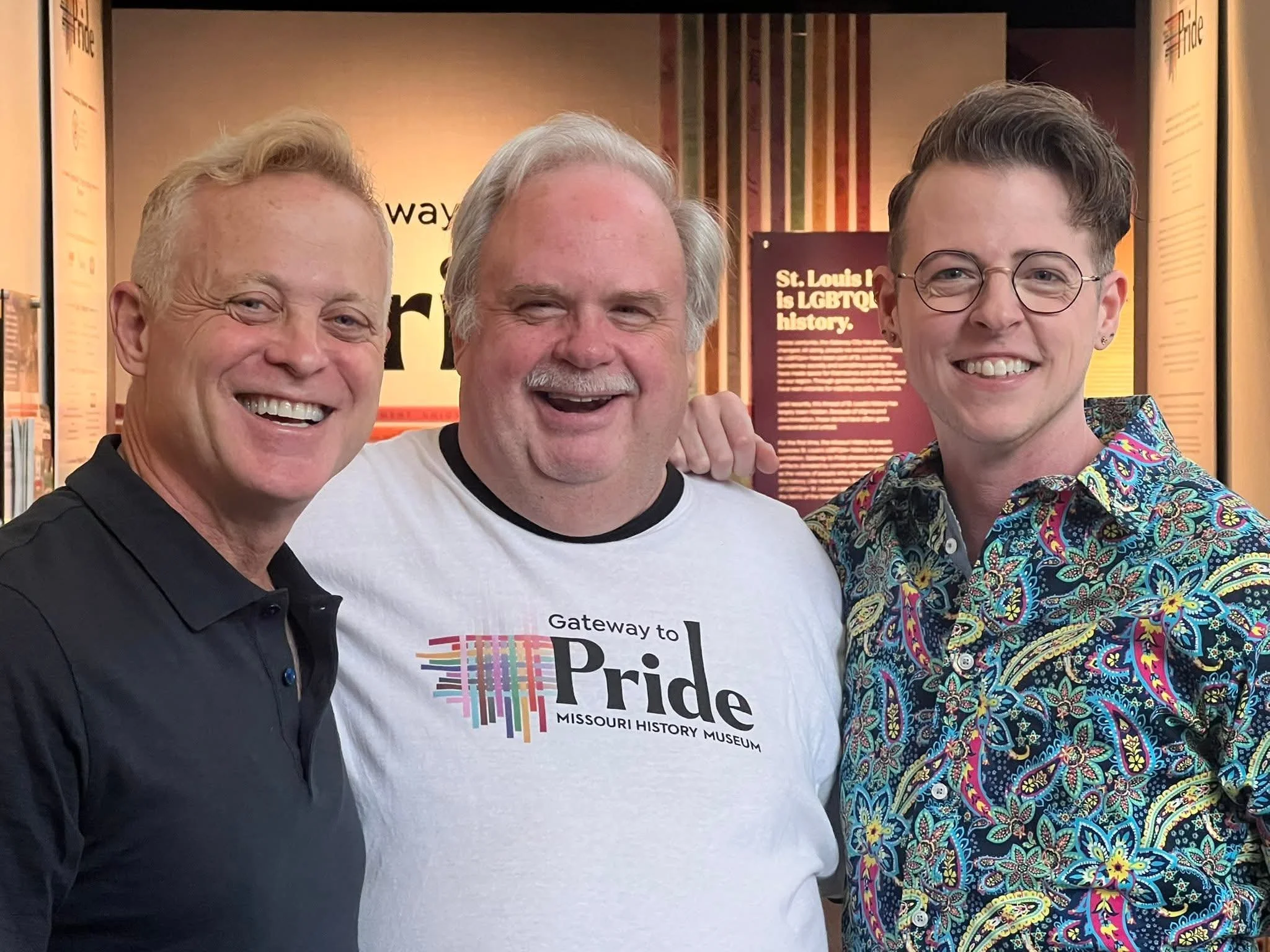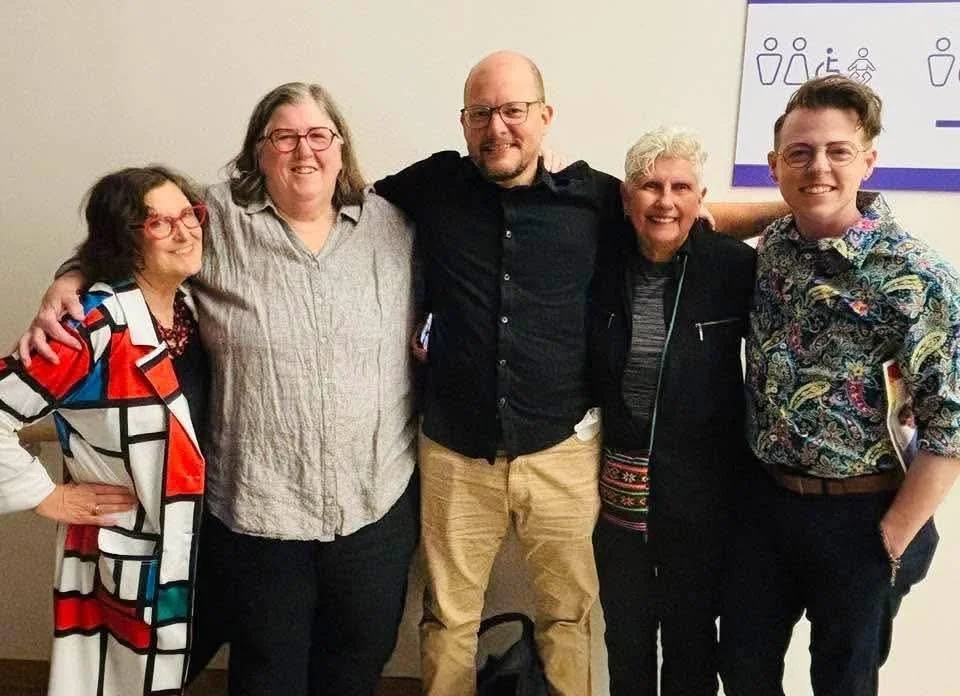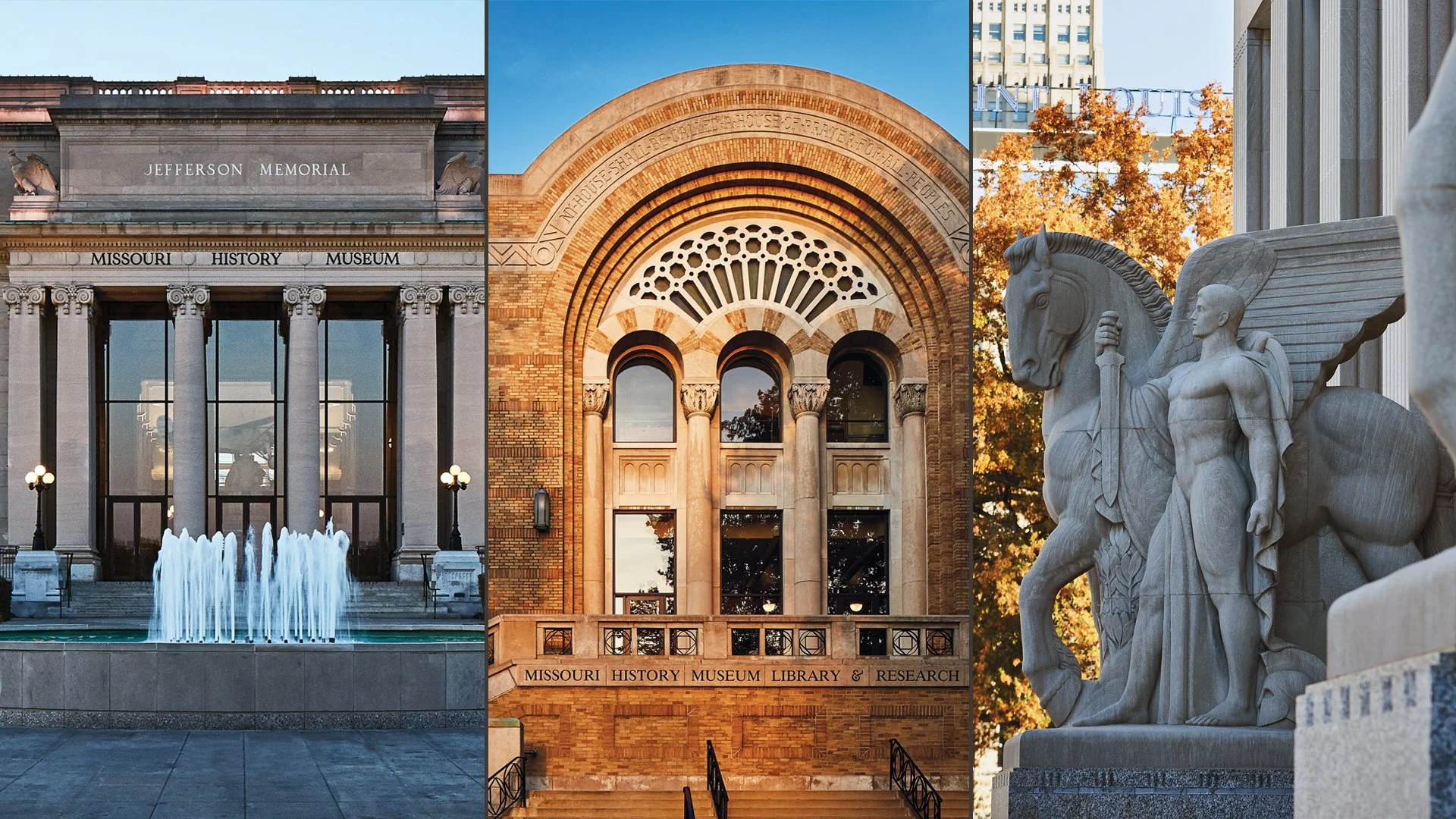Missouri History Museum Ignited Pride Month with a Bonanza of LGBTQIA+ Performers with Its Annual "Queer Writes Celebration
On June 5th, Joan Lipkin’s “Queer Writes 2025” at the Missouri History Museum helped launch Pride Month this year. In its third outing, the community was showcased. Lipkin founded this out-of-the box literary event of local LGBTQ+ writers or those with St Louis roots. It was the most ambitious production to date.
This year’s even drew over 300 eager audience members. In addition to the Gateway Men’s Chorus performing at the event for the first time with “Don’t Rain on My Parade,” the event featured puppeteer Matthew R Kearns, poet and storyteller Cheeraz Gormon, memoirist Jeff Truesdell, singer/songwriter Diane Richardson, essayist Jarek Steele, comedian Paul Cereghino, playwright Joan Lipkin and minister Romell Parks-Weekly.
Some Featured Artists
Lipkin, an award-winning theatre artist whose play, “Small Domestic Acts” has received staged readings in New York City, Portland and Tucson in the past year, did a moving reading of “Surviving at the A-Ok Convenience Store, Next to the Shell Station off the Highway” about a queer non binary Desi Muslim. She then called for more support for immigrants.
“In a sense, we are queering the concept of a more traditional writers event with our program,” said Lipkin. “It begins with language and what and how someone wants to say something. So while we may present a memoirist, we also value comedians and musicians.”
Lipkin said she was especially grateful to the museum for co-presenting Queer Writes in these challenging times and heralded them as a place for everyone.
“Queer Writes” is part of the Missouri History Museum’s Pride Month programming as well as its Thursday Night at the Museum series presented by Wash U.
About the Missouri History Museum
Missouri History Museum aerial view.
The Missouri History Museum, located in Forest Park, St. Louis, explores the history of St. Louis and Missouri from their founding to the present day. It's operated by the Missouri Historical Society and offers exhibits, education, events, and community engagement. The museum's historic building was originally the first national monument to Thomas Jefferson and later became the entrance to the 1904 World's Fair.
Key Aspects of the Missouri History Museum:
Historical Focus:
The museum covers a broad timeline, from the Mississippian people to contemporary times, with a particular emphasis on St. Louis's founding and the 1904 World's Fair.
Collections:
It boasts one of the largest collections of historical materials and artifacts of any regional history museum in the country, with exhibits that rotate throughout the year.
A significant portion of the museum is dedicated to the 1904 World's Fair, including a large-scale model of the fairgrounds and exhibits exploring its impact on the city.
Family-Friendly:
The History Clubhouse is a dedicated space for children with hands-on activities.
Free Admission:
General admission to the museum is free, making it accessible to a wide audience, according to the Missouri History Museum.
Community Engagement:
The museum actively engages with the St. Louis community through various programs, outreach services, and educational initiatives, according to the Brown School Evaluation Center.
Beyond St. Louis:
While focused on St. Louis, the museum also explores Missouri's broader history and its connections to national and international events.
Special Exhibits:
The museum features a rotating schedule of special exhibitions, offering visitors new and engaging content.
Research Center:
The museum also houses a non-circulating library and research center with a wealth of historical materials.
About the Missouri Historical Society
Missouri Historical Society locations.
The Missouri Historical Society (MHS) has been active in the St. Louis community since 1866. Today it serves as the confluence of historical perspectives and contemporary issues. MHS operates the Missouri History Museum, Library & Research Center, and Soldiers Memorial Military Museum. MHS is funded by the St. Louis City and County taxpayers through the Metropolitan Zoological Park and Museum District (ZMD) and by private donations. To find out more, visit mohistory.org/society

